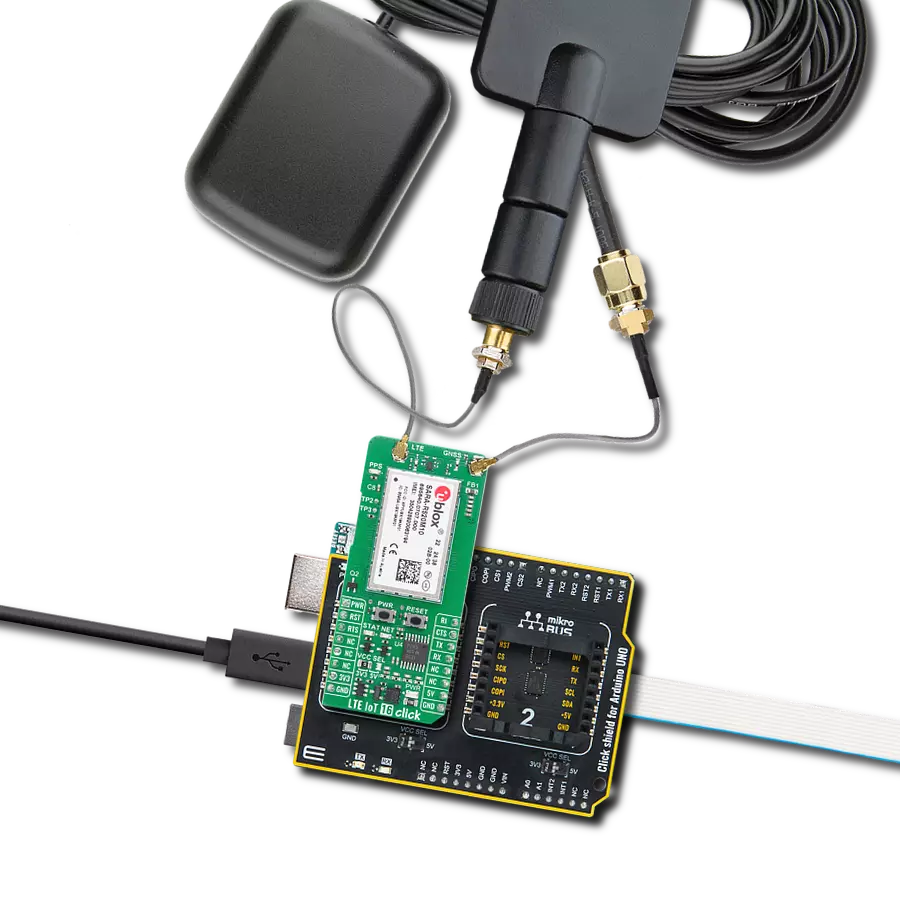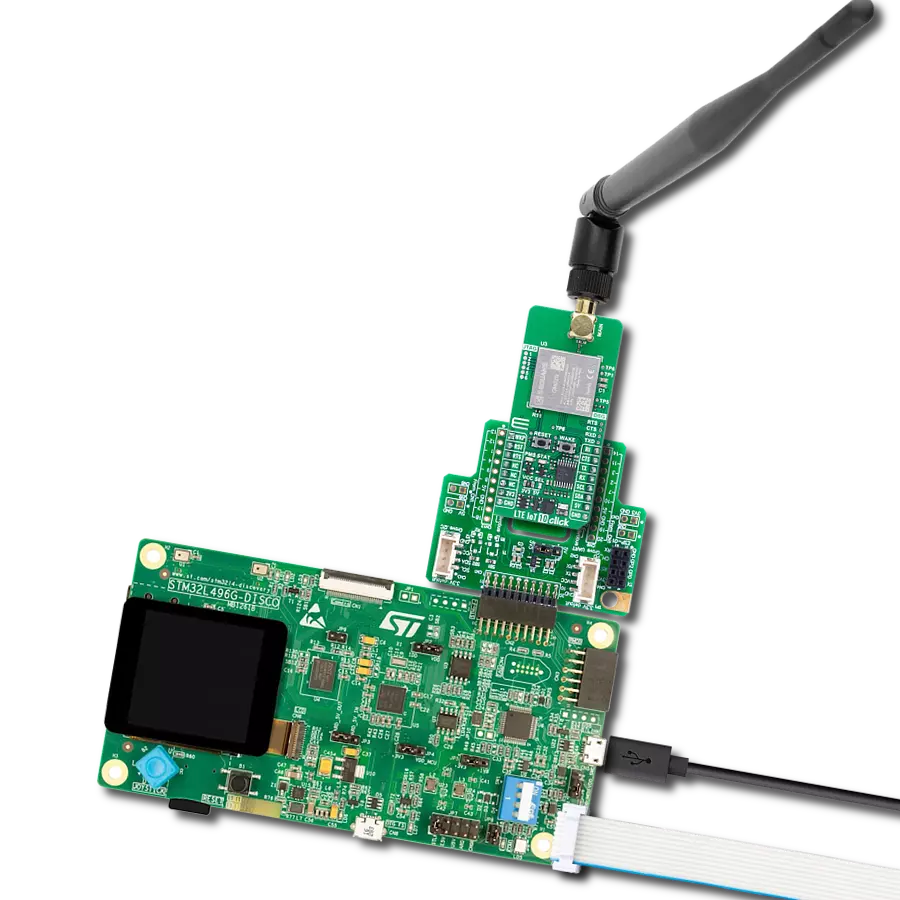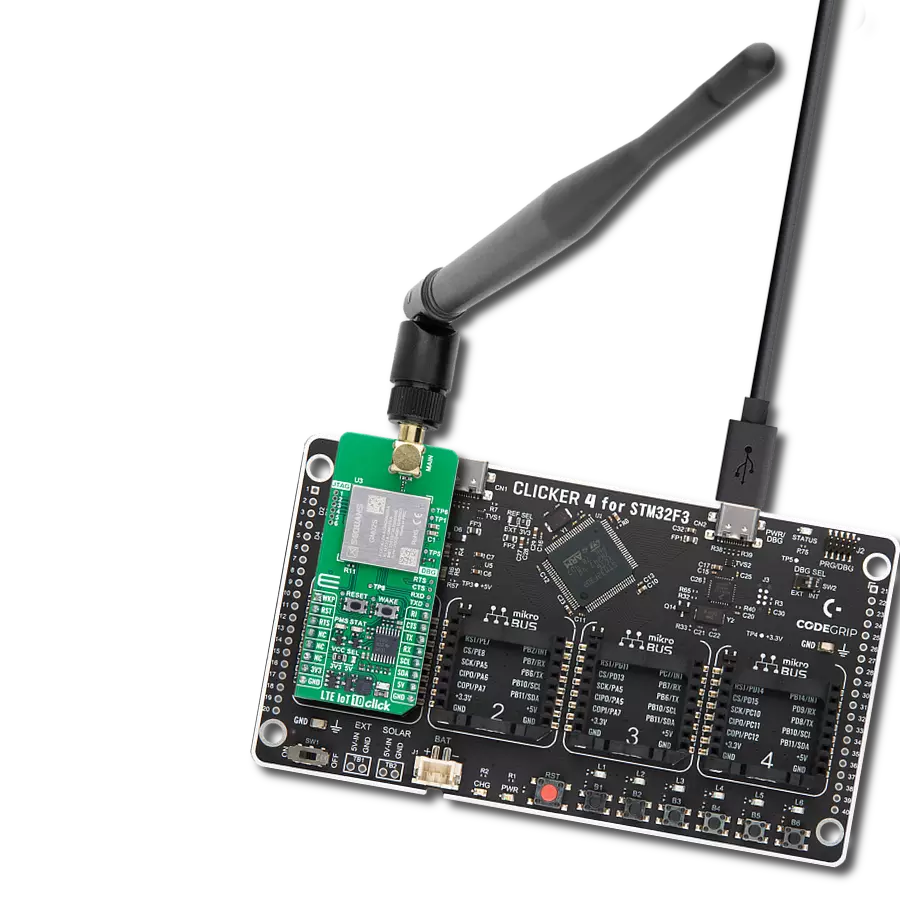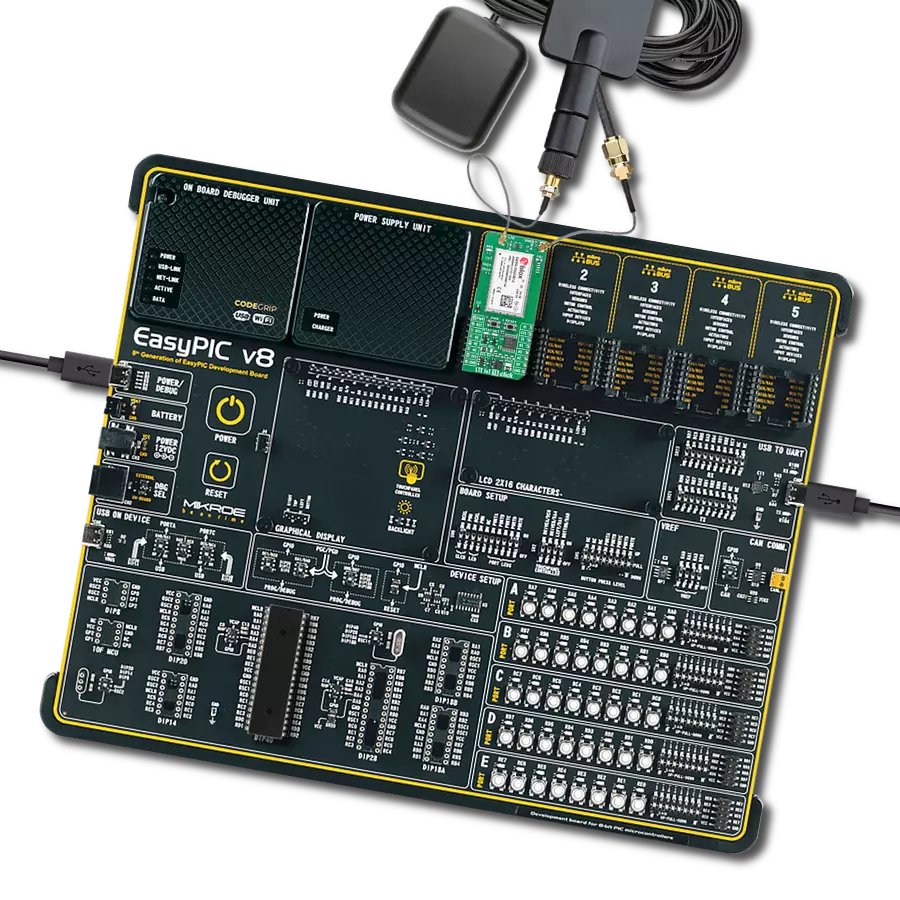步入连接与智能相融合的世界,选择我们的LTE卓越解决方案。通过采用我们的解决方案,确保您的物联网项目拥有强大、无缝且面向未来的网络支持。
A
A
硬件概览
它是如何工作的?
LTE IoT 4 Click基于nRF9160,这是一款高度集成的System-in-Package (SiP),包含集成的ARM® Cortex®-M33处理器、多模LTE-M/NB-IoT调制解调器、RF前端(RFFE)、GPS和电源管理功能,由Nordic Semiconductor提供。ARM® Cortex®-M33处理器支持1MB闪存和256KB RAM内存,具有先进的安全功能,如Arm CryptoCell,通过提供加密和安全资源来帮助保护您的物联网应用免受攻击威胁。它还内置了辅助GPS,适用于将来自云端的位置信息与GPS卫星数据相结合的跟踪应用,以便远程监控设备的位置。nRF9160经过认证,可以在全球最重要的地区、网络和LTE频段上运行。nRF9160设计充分利用LTE-M和NB-IoT标准的能
效优势。它支持PSM和eDRX省电模式,使nRF9160能够更长时间休眠。在此Click板™的左侧,有一个额外的标记为SWD的头部,通过串行线调试(SWD)接口(SWDIO、SWCLK和SWO)提供完整的调试和编程能力支持。LTE IoT 4 Click使用UART接口与MCU通信,作为默认的通信协议,用户也可以选择使用其他接口,如SPI和I2C,如果他们希望通过这些协议自行配置模块并编写库。它还可以通过mikroBUS™插座上的硬件复位引脚(标记为RST)复位,将此引脚置于低电平状态即可。SiP固件中的GPS功能目前尚不支持。然而,用户可以使用Nordic的SDK和nRF Connect SDK开发自己的固件,并通过SWD接口
更新SiP。LTE调制解调器集成了一个灵活的收发器,频率范围为700至2200 MHz。此外,它具有两个SMA天线连接器,阻抗为50Ω,标记为GPS和LTE,用于连接MIKROE提供的适当天线,如LTE Flat Rotation Antenna和Active GPS Antenna。除了这些SMA连接器之外,该Click板™还具有一个微型SIM卡槽,提供多种连接和接口选项。此Click板™只能在3.3V逻辑电压水平下运行。在使用具有不同逻辑电平的MCU之前,必须进行适当的逻辑电压电平转换。此外,它还配备了一个包含函数和示例代码的库,可用作进一步开发的参考。
功能概述
开发板
Clicker 2 for Kinetis 是一款紧凑型入门开发板,它将 Click 板™的灵活性带给您喜爱的微控制器,使其成为实现您想法的完美入门套件。它配备了一款板载 32 位 ARM Cortex-M4F 微控制器,NXP 半导体公司的 MK64FN1M0VDC12,两个 mikroBUS™ 插槽用于 Click 板™连接,一个 USB 连接器,LED 指示灯,按钮,一个 JTAG 程序员连接器以及两个 26 针头用于与外部电子设备的接口。其紧凑的设计和清晰、易识别的丝网标记让您能够迅速构建具有独特功能和特性
的小工具。Clicker 2 for Kinetis 开发套件的每个部分 都包含了使同一板块运行最高效的必要组件。除了可以选择 Clicker 2 for Kinetis 的编程方式,使用 USB HID mikroBootloader 或外部 mikroProg 连接器进行 Kinetis 编程外,Clicker 2 板还包括一个干净且调节过的开发套件电源供应模块。它提供了两种供电方式;通过 USB Micro-B 电缆,其中板载电压调节器为板上每个组件提供适当的电压水平,或使用锂聚合物 电池通过板载电池连接器供电。所有 mikroBUS™ 本
身支持的通信方法都在这块板上,包括已经建立良好的 mikroBUS™ 插槽、重置按钮和几个用户可配置的按钮及 LED 指示灯。Clicker 2 for Kinetis 是 Mikroe 生态系统的一个组成部分,允许您在几分钟内创建新的应用程序。它由 Mikroe 软件工具原生支持,得益于大量不同的 Click 板™(超过一千块板),其数量每天都在增长,它涵盖了原型制作的许多方面。
微控制器概述
MCU卡片 / MCU
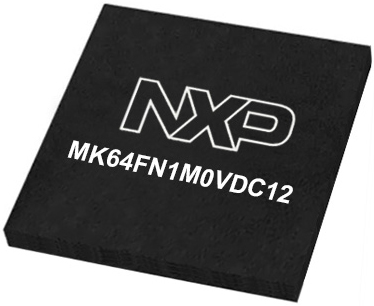
建筑
ARM Cortex-M4
MCU 内存 (KB)
1024
硅供应商
NXP
引脚数
121
RAM (字节)
262144
你完善了我!
配件
LTE Flat Rotation Antenna 是提升3G/4G LTE设备性能的多功能选择。其宽频范围为700-2700MHz,确保在全球主要蜂窝频段上的最佳连接。该平板天线配有SMA公头连接器,可轻松直接连接到您的设备或SMA模块连接器。其一个突出特点是可调节角度,可以以45⁰为增量(0⁰/45⁰/90⁰)设置,使您可以微调天线的方向以实现最大信号接收。具有50Ω的阻抗和小于2.0:1的电压驻波比,这款天线确保可靠和高效的连接。其5dB的增益、垂直极化和全向辐射模式增强了信号强度,适用于各种应用。天线尺寸为196mm长和38mm宽,提供紧凑但有效的连接解决方案。最大输入功率为50W,可以满足各种设备的需求。
使用的MCU引脚
mikroBUS™映射器
“仔细看看!”
Click board™ 原理图

一步一步来
项目组装
实时跟踪您的结果
应用程序输出
1. 应用程序输出 - 在调试模式下,“应用程序输出”窗口支持实时数据监控,直接提供执行结果的可视化。请按照提供的教程正确配置环境,以确保数据正确显示。

2. UART 终端 - 使用UART Terminal通过USB to UART converter监视数据传输,实现Click board™与开发系统之间的直接通信。请根据项目需求配置波特率和其他串行设置,以确保正常运行。有关分步设置说明,请参考提供的教程。

3. Plot 输出 - Plot功能提供了一种强大的方式来可视化实时传感器数据,使趋势分析、调试和多个数据点的对比变得更加直观。要正确设置,请按照提供的教程,其中包含使用Plot功能显示Click board™读数的分步示例。在代码中使用Plot功能时,请使用以下函数:plot(insert_graph_name, variable_name);。这是一个通用格式,用户需要将“insert_graph_name”替换为实际图表名称,并将“variable_name”替换为要显示的参数。

软件支持
库描述
该库包含 LTE IoT 4 Click 驱动程序的 API。
关键功能:
lteiot4_set_rst- 设置复位引脚的状态lteiot4_send_cmd- 发送命令功能lteiot4_set_sim_apn- 设置SIM卡APN
开源
代码示例
完整的应用程序代码和一个现成的项目可以通过NECTO Studio包管理器直接安装到NECTO Studio。 应用程序代码也可以在MIKROE的GitHub账户中找到。
/*!
* @file main.c
* @brief LTE IoT 4 Click Example.
*
* # Description
* This example reads and processes data from LTE IoT 4 Clicks.
*
* The demo application is composed of two sections :
*
* ## Application Init
* Initializes driver and wake-up module.
*
* ## Application Task
* Reads the received data and parses it.
*
* ## Additional Function
* - static void lteiot4_clear_app_buf ( void )
* - static void lteiot4_error_check( err_t error_flag )
* - static void lteiot4_log_app_buf ( void )
* - static void lteiot4_check_connection( void )
* - static err_t lteiot4_rsp_check ( void )
* - static err_t lteiot4_process ( void )
*
* *note:*
* In order for the example to work,
user needs to set the phone number and sim apn to which he wants to send an SMS
* Enter valid data for the following macros: SIM_APN.
* E.g.
SIM_APN "vip.mobile"
*
* @author Luka Filipovic
*
*/
#include "board.h"
#include "log.h"
#include "lteiot4.h"
#define APP_OK 0
#define APP_ERROR_DRIVER -1
#define APP_ERROR_OVERFLOW -2
#define APP_ERROR_TIMEOUT -3
#define RSP_OK "OK"
#define RSP_ERROR "ERROR"
#define SIM_APN "" // Set valid SIM APN
#define PROCESS_BUFFER_SIZE 500
#define WAIT_FOR_CONNECTION 0
#define CONNECTED_TO_NETWORK 1
static lteiot4_t lteiot4;
static log_t logger;
static char app_buf[ PROCESS_BUFFER_SIZE ] = { 0 };
static int32_t app_buf_len = 0;
static int32_t app_buf_cnt = 0;
static uint8_t app_connection_status = WAIT_FOR_CONNECTION;
static err_t app_error_flag;
/**
* @brief LTE IoT 4 clearing application buffer.
* @details This function clears memory of application buffer and reset it's length and counter.
* @note None.
*/
static void lteiot4_clear_app_buf ( void );
/**
* @brief LTE IoT 4 data reading function.
* @details This function reads data from device and concatenates data to application buffer.
*
* @return @li @c 0 - Read some data.
* @li @c -1 - Nothing is read.
* @li @c -2 - Application buffer overflow.
*
* See #err_t definition for detailed explanation.
* @note None.
*/
static err_t lteiot4_process ( void );
/**
* @brief LTE IoT 4 check for errors.
* @details This function checks for different types of errors and logs them on UART.
* @note None.
*/
static void lteiot4_error_check( err_t error_flag );
/**
* @brief LTE IoT 4 logs application buffer.
* @details This function logs data from application buffer.
* @note None.
*/
static void lteiot4_log_app_buf ( void );
/**
* @brief LTE IoT 4 response check.
* @details This function checks for response and returns the status of response.
*
* @return application status.
* See #err_t definition for detailed explanation.
* @note None.
*/
static err_t lteiot4_rsp_check ( void );
/**
* @brief LTE IoT 4 check connection.
* @details This function checks connection to the network and
* logs that status to UART.
*
* @note None.
*/
static void lteiot4_check_connection( void );
void application_init ( void )
{
log_cfg_t log_cfg; /**< Logger config object. */
lteiot4_cfg_t lteiot4_cfg; /**< Click config object. */
/**
* Logger initialization.
* Default baud rate: 115200
* Default log level: LOG_LEVEL_DEBUG
* @note If USB_UART_RX and USB_UART_TX
* are defined as HAL_PIN_NC, you will
* need to define them manually for log to work.
* See @b LOG_MAP_USB_UART macro definition for detailed explanation.
*/
LOG_MAP_USB_UART( log_cfg );
log_init( &logger, &log_cfg );
log_info( &logger, " Application Init " );
Delay_ms ( 1000 );
// Click initialization.
lteiot4_cfg_setup( <eiot4_cfg );
LTEIOT4_MAP_MIKROBUS( lteiot4_cfg, MIKROBUS_1 );
err_t init_flag = lteiot4_init( <eiot4, <eiot4_cfg );
if ( init_flag == UART_ERROR )
{
log_error( &logger, " Application Init Error. " );
log_info( &logger, " Please, run program again... " );
for ( ; ; );
}
log_info( &logger, " Power up device... " );
lteiot4_default_cfg ( <eiot4 );
Delay_ms ( 1000 );
Delay_ms ( 1000 );
Delay_ms ( 1000 );
Delay_ms ( 1000 );
Delay_ms ( 1000 );
lteiot4_process( );
lteiot4_process( );
lteiot4_process( );
lteiot4_clear_app_buf( );
//AT
log_info( &logger, " Communication test " );
lteiot4_send_cmd( <eiot4, LTEIOT4_CMD_AT );
app_error_flag = lteiot4_rsp_check();
lteiot4_error_check( app_error_flag );
Delay_ms ( 500 );
//CGMM
log_info( &logger, " Module version " );
lteiot4_send_cmd( <eiot4, LTEIOT4_CMD_MODULE_VERSION );
app_error_flag = lteiot4_rsp_check();
lteiot4_error_check( app_error_flag );
Delay_ms ( 500 );
//CGMR
log_info( &logger, " FW version " );
lteiot4_send_cmd( <eiot4, LTEIOT4_CMD_FW_VERSION );
app_error_flag = lteiot4_rsp_check();
lteiot4_error_check( app_error_flag );
Delay_ms ( 500 );
//CFUN
log_info( &logger, " Flight mode " );
lteiot4_send_cmd( <eiot4, LTEIOT4_CMD_FLIGHT_MODE );
app_error_flag = lteiot4_rsp_check();
lteiot4_error_check( app_error_flag );
Delay_ms ( 500 );
//XSYSTEMMODE
log_info( &logger, " Enable NB network " );
lteiot4_send_cmd( <eiot4, LTEIOT4_CMD_NBIOT_MODE );
app_error_flag = lteiot4_rsp_check();
lteiot4_error_check( app_error_flag );
Delay_ms ( 500 );
//CIND
log_info( &logger, " Enable service and messages " );
lteiot4_send_cmd( <eiot4, LTEIOT4_CMD_ENABLE_NET_SMS );
app_error_flag = lteiot4_rsp_check();
lteiot4_error_check( app_error_flag );
Delay_ms ( 500 );
//CFUN
log_info( &logger, " Full functionalty mode " );
lteiot4_send_cmd( <eiot4, LTEIOT4_CMD_FULL_FUNCTION );
app_error_flag = lteiot4_rsp_check();
lteiot4_error_check( app_error_flag );
Delay_ms ( 500 );
//CGDCONT
log_info( &logger, " Set APN " );
lteiot4_set_sim_apn( <eiot4, SIM_APN );
app_error_flag = lteiot4_rsp_check();
lteiot4_error_check( app_error_flag );
Delay_ms ( 500 );
//COPS
log_info( &logger, " Set automatic network search " );
lteiot4_send_cmd( <eiot4, LTEIOT4_CMD_AUTO_NET_SRC );
app_error_flag = lteiot4_rsp_check();
lteiot4_error_check( app_error_flag );
Delay_ms ( 500 );
//CEREG
log_info( &logger, " Activate search for network " );
lteiot4_send_cmd( <eiot4, LTEIOT4_CMD_SEARCH_NET );
app_error_flag = lteiot4_rsp_check();
lteiot4_error_check( app_error_flag );
Delay_ms ( 500 );
//CIMI
log_info( &logger, " SIM test " );
lteiot4_send_cmd( <eiot4, LTEIOT4_CMD_SIM_TEST );
app_error_flag = lteiot4_rsp_check();
lteiot4_error_check( app_error_flag );
Delay_ms ( 500 );
app_buf_len = 0;
app_buf_cnt = 0;
app_connection_status = WAIT_FOR_CONNECTION;
log_info( &logger, " Application Task\r\n" );
log_printf( &logger, "-------------------------------\r\n" );
Delay_ms ( 1000 );
Delay_ms ( 1000 );
Delay_ms ( 1000 );
}
void application_task ( void )
{
if ( app_connection_status == WAIT_FOR_CONNECTION )
{
//CEREG
log_info( &logger, " Check connection " );
lteiot4_send_cmd( <eiot4, LTEIOT4_CMD_CHECK_CONNECTION );
app_error_flag = lteiot4_rsp_check();
lteiot4_error_check( app_error_flag );
Delay_ms ( 500 );
//CEREG
log_info( &logger, " Check network status " );
lteiot4_send_cmd( <eiot4, LTEIOT4_CMD_CHECK_REGISTARTION );
app_error_flag = lteiot4_rsp_check();
lteiot4_error_check( app_error_flag );
Delay_ms ( 500 );
//CEREG
log_info( &logger, " Check signal quality " );
lteiot4_send_cmd( <eiot4, LTEIOT4_CMD_SIGNAL_QUALITY );
app_error_flag = lteiot4_rsp_check();
lteiot4_error_check( app_error_flag );
log_printf( &logger, "-------------------------------\r\n" );
Delay_ms ( 1000 );
Delay_ms ( 1000 );
Delay_ms ( 1000 );
Delay_ms ( 1000 );
Delay_ms ( 1000 );
}
else
{
log_info( &logger, "CONNECTED TO NETWORK\r\n" );
log_printf( &logger, "-------------------------------\r\n" );
//CCLK
log_info( &logger, " Set Time " );
lteiot4_send_cmd( <eiot4, LTEIOT4_CMD_SET_DUMMY_CLOCK );
app_error_flag = lteiot4_rsp_check();
lteiot4_error_check( app_error_flag );
log_printf( &logger, "-------------------------------\r\n" );
Delay_ms ( 1000 );
Delay_ms ( 1000 );
Delay_ms ( 1000 );
for(;;)
{
//XTEMP
log_info( &logger, " Check Temperature " );
lteiot4_send_cmd( <eiot4, LTEIOT4_CMD_CHECK_TEMPERATURE );
app_error_flag = lteiot4_rsp_check();
lteiot4_error_check( app_error_flag );
Delay_ms ( 500 );
//CCLK
log_info( &logger, " Check Time " );
lteiot4_send_cmd( <eiot4, LTEIOT4_CMD_CHECK_CLOCK );
app_error_flag = lteiot4_rsp_check();
lteiot4_error_check( app_error_flag );
log_printf( &logger, "-------------------------------\r\n" );
Delay_ms ( 1000 );
Delay_ms ( 1000 );
Delay_ms ( 1000 );
Delay_ms ( 1000 );
Delay_ms ( 1000 );
}
}
}
int main ( void )
{
/* Do not remove this line or clock might not be set correctly. */
#ifdef PREINIT_SUPPORTED
preinit();
#endif
application_init( );
for ( ; ; )
{
application_task( );
}
return 0;
}
static void lteiot4_clear_app_buf ( void )
{
memset( app_buf, 0, app_buf_len );
app_buf_len = 0;
app_buf_cnt = 0;
}
static err_t lteiot4_process ( void )
{
err_t return_flag = APP_ERROR_DRIVER;
int32_t rx_size;
char rx_buff[ PROCESS_BUFFER_SIZE ] = { 0 };
rx_size = lteiot4_generic_read( <eiot4, rx_buff, PROCESS_BUFFER_SIZE );
if ( rx_size > 0 )
{
int32_t buf_cnt = 0;
return_flag = APP_OK;
if ( app_buf_len + rx_size >= PROCESS_BUFFER_SIZE )
{
lteiot4_clear_app_buf( );
return_flag = APP_ERROR_OVERFLOW;
}
else
{
buf_cnt = app_buf_len;
app_buf_len += rx_size;
}
for ( int32_t rx_cnt = 0; rx_cnt < rx_size; rx_cnt++ )
{
if ( rx_buff[ rx_cnt ] != 0 )
{
app_buf[ ( buf_cnt + rx_cnt ) ] = rx_buff[ rx_cnt ];
}
else
{
app_buf_len--;
}
}
}
return return_flag;
}
static err_t lteiot4_rsp_check ( void )
{
uint16_t timeout_cnt = 0;
uint16_t timeout = 5000;
err_t error_flag = lteiot4_process( );
if ( ( error_flag != 0 ) && ( error_flag != -1 ) )
{
return error_flag;
}
while ( ( strstr( app_buf, RSP_OK ) == 0 ) && ( strstr( app_buf, RSP_ERROR ) == 0 ) )
{
error_flag = lteiot4_process( );
if ( ( error_flag != 0 ) && ( error_flag != -1 ) )
{
return error_flag;
}
timeout_cnt++;
if ( timeout_cnt > timeout )
{
lteiot4_clear_app_buf( );
return APP_ERROR_TIMEOUT;
}
Delay_ms ( 1 );
}
lteiot4_check_connection();
lteiot4_log_app_buf();
return APP_OK;
}
static void lteiot4_error_check( err_t error_flag )
{
if ( ( error_flag != 0 ) && ( error_flag != -1 ) )
{
switch ( error_flag )
{
case -2:
log_error( &logger, " Overflow!" );
break;
case -3:
log_error( &logger, " Timeout!" );
break;
default:
break;
}
}
}
static void lteiot4_log_app_buf ( void )
{
for ( int32_t buf_cnt = 0; buf_cnt < app_buf_len; buf_cnt++ )
{
log_printf( &logger, "%c", app_buf[ buf_cnt ] );
}
log_printf( &logger, "\r\n" );
lteiot4_clear_app_buf( );
}
static void lteiot4_check_connection( void )
{
#define CONNECTED "+CGATT: 1"
if ( strstr( app_buf, CONNECTED ) != 0 )
{
app_connection_status = CONNECTED_TO_NETWORK;
}
}
// ------------------------------------------------------------------------ END

























